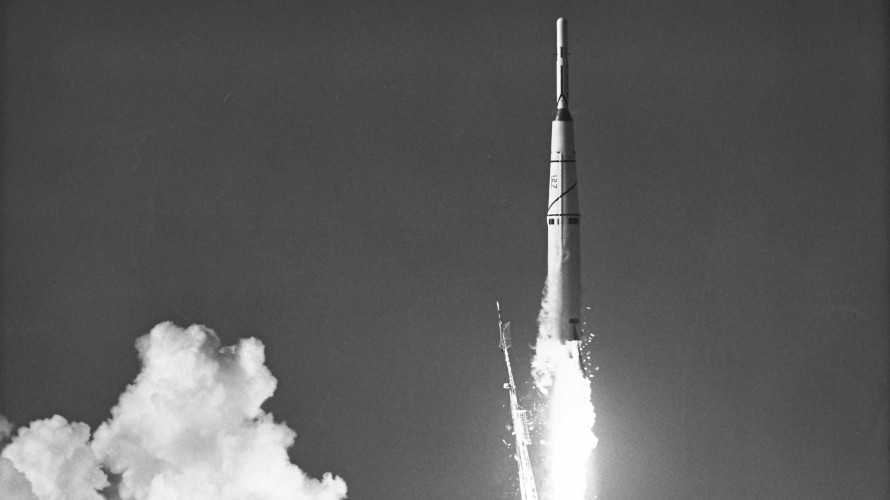Early Proposals to Reach the Moon
More modest (and realistic) proposals for lunar missions, which could be flown in the near term using available technology, were studied by a wide range of groups. In the two years leading up to the launch of Sputnik and the beginning of the Space Age, serious proposals included one by Aerojet Corporation (which today is part of Aerojet Rocketdyne) to use a five-stage version of its Aerobee sounding rocket to send a probe to the Moon as well as Ford’s Aeronutronic division using a lash up of the Vanguard and X-17 rockets, Martin (which today is part of the aerospace giant Lockheed Martin) using their Titan ICBM then under development, and the USAF employing the rocket booster of the Navaho cruise missile (then the largest American rocket to fly) combined with the Redstone and solid upper stages. The RAND Corporation proposed a lunar impactor launched using a version of the Atlas ICBM and the Massachusetts Institute of Technology studied recoverable lunar probes.
There were even serious proposals to detonate a nuclear weapon on the surface of the Moon. One such proposal was outlined in an article in the June 1957 issue of
Scientific American written by the designer of the innovative Atlas ICBM, Krafft Ehricke, and Noble prize winning physicist, George Gamow. Called “Cow” (referring to the nursery rhyme line, “the cow jumped over the Moon”), one of their proposed flights would detonate a nuclear device on the lunar surface with a second probe following close behind to pass through the resulting debris cloud to retrieve lunar samples for return back to the Earth.
After the furor caused by the launching of the first Soviet Sputniks (see “
Sputnik: The Launch of the Space Age”), some of these proposals started to receive serious attention by the American Department of Defense (DoD). In the hopes of quickly unifying the military’s research projects and securing a major share of the nation’s future space program for the DoD, Secretary of Defense Neil McElroy established the Advanced Research Projects Agency (ARPA) on February 7, 1958. ARPA was charged with coordinating all the DoD’s advanced research, including their space projects, to help eliminate duplicate efforts among the various branches of the service. Since the entire space program at this time was connected in some way to the military, by default ARPA would be in charge of almost all aspects of the American space program until Congress and the Eisenhower Administration made other arrangements.
On March 27, 1958, President Eisenhower approved McElroy’s plan for ARPA to undertake its first series of space missions. The most ambitious of these was labeled “Operation Mona” which called for the launching of five probes to the Moon in hopes of beating the Soviet Union to our neighbor. Three of these attempts would be sponsored by the USAF Ballistic Missile Division while the von Braun’s group at the Army Ballistic Missile Agency (ABMA) would be responsible for the last two. ARPA believed that a successful military lunar mission would not only help the US leap frog ahead of the Soviet Union in the space race, but also add credibility to the military presence in space. It was felt by some that these missions could help prevent any civilian space agency that Congress might create from taking an important share of the space program from the DoD. In addition, the long-distance guidance and tracking experience gained in the project would be useful for future scientific and weapons programs.

